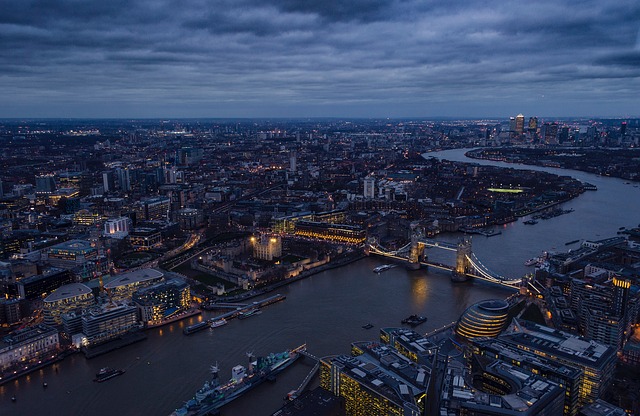London's Blue Ribbon Network
London’s strategic water network, described as the “Blue Ribbon Network” covers the River Thames, canals, tributary rivers, lakes, reservoirs, docks and other waterbodies. This water network is an invaluable resource which has connected the capital since the Industrial Revolution. The Blue Ribbon Network extends to every London borough, and it is this connection with water that gives the capital its picturesque character.
Once the primary means of transportation, the water network has been a big contributor to the successful development of the capital in the past; and yet today the waterways in London are experiencing constant degradation.
With the expansion of roadways, waterways started to lose economic significance and they are now no longer used in the same way as before. Nevertheless, as road congestion continues to rise and inner-city air quality deteriorates, London is revisiting water transportation opportunities.
Water transportation can have multiple environmental and social benefits over road transportation. Environmental benefits can be achieved owing to significantly lower carbon emissions[1]; and social benefits are achieved due to reduced congestion on London’s road network, reduced accidents and road maintenance, reduced noise pollution and so on[2]. A modal shift in transportation, where feasible, is a good opportunity to make the capital a healthier and better city for all that live here.
With London’s ever-changing skyline, construction transportation has been identified as a significant contributor to transportation emissions and road congestion. Exploiting the waterways can provide the construction sector with a good opportunity to reduce emissions and social impact. With that in view, many new developments are being encouraged to maximise the use of waterways for the transportation of building materials and construction waste.
KLH undertook a detailed study to evaluate the feasibility of water transportation for a mixed-use development project on the River Lee Navigation. The project, in theory, is ideally located with direct access to the waterway. However, the study found several limitations to exploitation of the waterways due to the lack of efficient infrastructure along the network.
The main logistical issues emerged from the lack of public wharves with cargo handling capabilities and the extensive network of publicly-accessible towpaths that restrict safe, direct access to the waterways. Furthermore, longer travel durations[3] and double handling significantly increase the cost of waterway logistics.
Based on the Department for Transport’s modal shift benefit figures, the higher logistics cost was found to largely outweigh the overall social benefit value, apart from bulk disposal of excavation waste. These findings are supported by several other studies. Consequently, the only major project currently under construction in the capital using barge transportation is the Thames Tideway Tunnel; with its Thames-side mass excavations, it is a perfect candidate for water logistics.
The social benefits of water logistics are significant, and the City of London would do well to protect existing wharves and continue to support the waste and materials handling facilities that have historically made their home in these key locations. While housing provision is an issue, and waterside locations carry an obvious premium, some of the intrinsic value of our waterways is the sight of a working vessel transporting goods and materials into the heart of the City. Hopefully, with the New London Plan’s recognition of this important resource, the capacity of the city’s waterways to support a sustainable future will be better exploited.
____________________________________________________________
[1] Figures published by DECC and DEFRA indicate that the emissions associated with water transport are significantly lower, at almost a fifth compared to road transport. (kgCO2e/tonne-km)
[2] Department for Transport’s (DfT) Mode Shift Benefit Values: Technical Report
[3] Barges used for transportation of construction materials can usually move at a speed of 3-4miles per hour, thus requiring considerably longer duration for transportation. Travel duration can be further affected because of tidal impacts and number of locks along the navigation path.
[edit] Find out more
[edit] Related articles on Designing Buildings Wiki
Featured articles and news
OpenUSD possibilities: Look before you leap
Being ready for the OpenUSD solutions set to transform architecture and design.
Global Asbestos Awareness Week 2025
Highlighting the continuing threat to trades persons.
Retrofit of Buildings, a CIOB Technical Publication
Now available in Arabic and Chinese aswell as English.
The context, schemes, standards, roles and relevance of the Building Safety Act.
Retrofit 25 – What's Stopping Us?
Exhibition Opens at The Building Centre.
Types of work to existing buildings
A simple circular economy wiki breakdown with further links.
A threat to the creativity that makes London special.
How can digital twins boost profitability within construction?
The smart construction dashboard, as-built data and site changes forming an accurate digital twin.
Unlocking surplus public defence land and more to speed up the delivery of housing.
The Planning and Infrastructure Bill
An outline of the bill with a mix of reactions on potential impacts from IHBC, CIEEM, CIC, ACE and EIC.
Farnborough College Unveils its Half-house for Sustainable Construction Training.
Spring Statement 2025 with reactions from industry
Confirming previously announced funding, and welfare changes amid adjusted growth forecast.
Scottish Government responds to Grenfell report
As fund for unsafe cladding assessments is launched.
CLC and BSR process map for HRB approvals
One of the initial outputs of their weekly BSR meetings.
Building Safety Levy technical consultation response
Details of the planned levy now due in 2026.
Great British Energy install solar on school and NHS sites
200 schools and 200 NHS sites to get solar systems, as first project of the newly formed government initiative.
600 million for 60,000 more skilled construction workers
Announced by Treasury ahead of the Spring Statement.

























